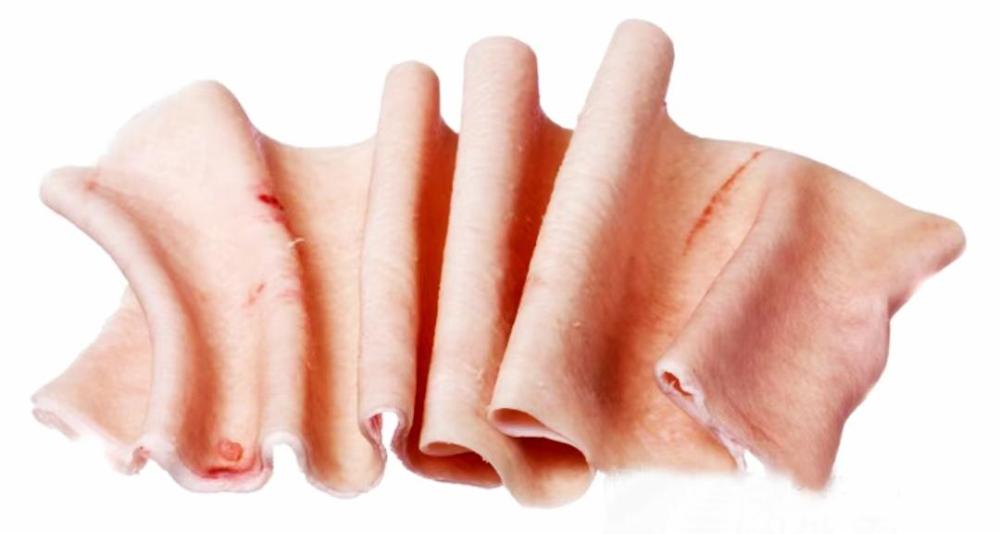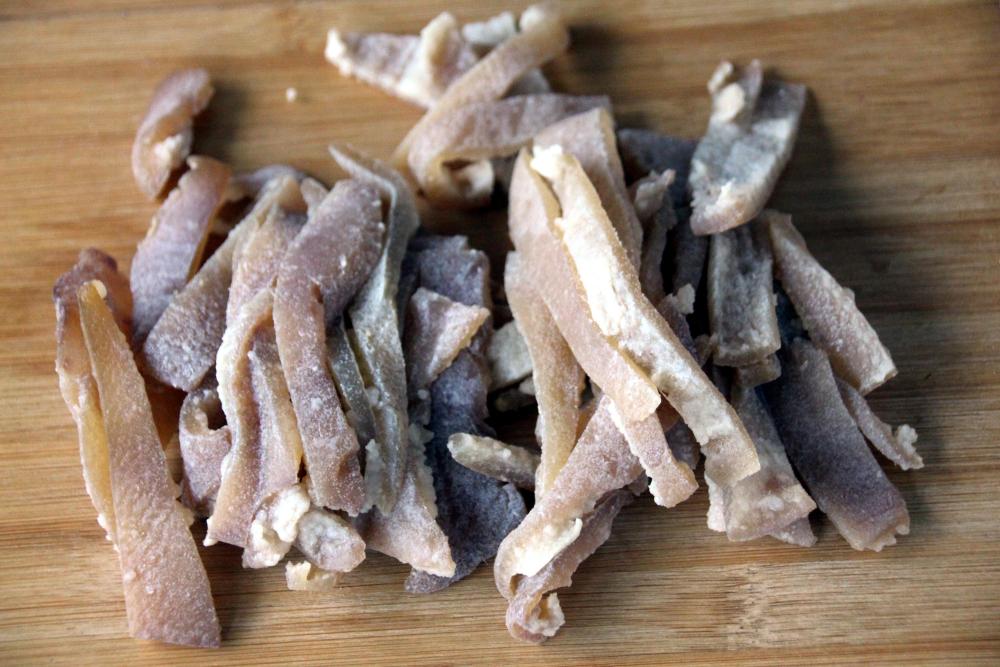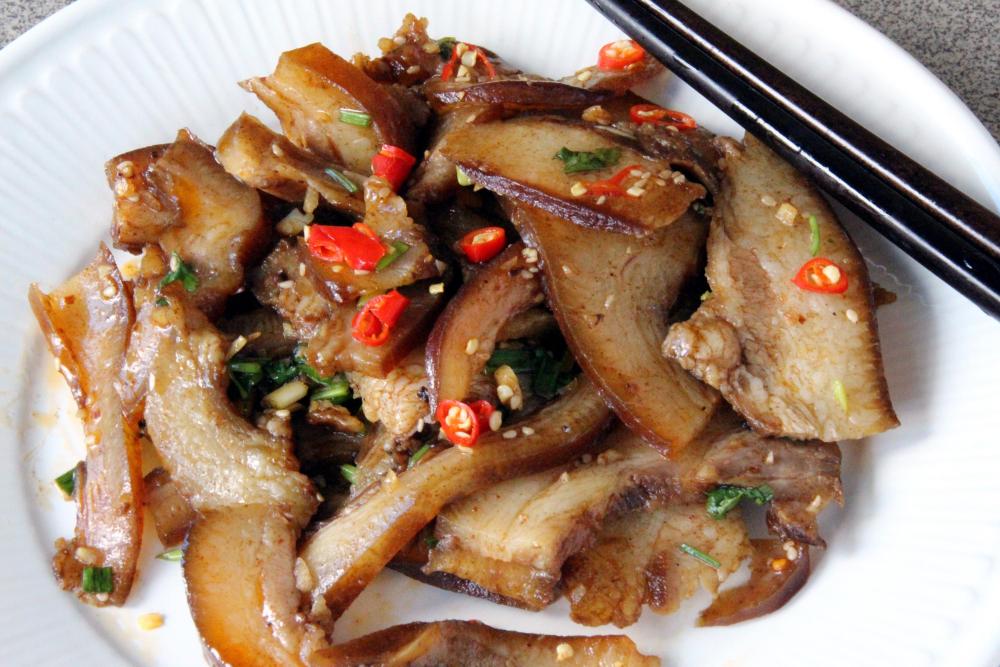The largest organ we possess is our skin and the same is true for most vertebrates. This is does not go to waste, either. Often known as ’pork rinds’ when used in a culinary manner, the skin is fried or roasted until crisp and sold as a snack food, often with beer. In the USA, this is pork cracklings while in the UK, they are the pork scratchings sold in many pubs. Newfoundland in Canada has its scrunchions, used as a condiment and scattered over some dishes.
In South America, Columbia is known for its chicharrones which come in two guises – chicharrón toteado which are made from meatless skin and chicharrón cocho which retains some meat. Mexico, of course, is also famous for chicharrones.
In SE Asia, pork rind, known in Vietnamese as tóp mỡ is often added to noodle dishes in Vietnam while in Northern Thailand, แคบหมู (khaep mu) is commonly eaten in Chiang Mai. It is often served with hot chilli sauces and even appears in some salads.
Here in China, people often render their own lard from pork fat and skin. The by-product is dry fried pork skin and this is eaten as a snack food or cooks’ treat. Unprocessed pork skin is sold in most supermarkets.
Pig Skin
Also found in supermarkets is processed pork rinds, often from the animal’s head skin. This is often flavoured with 5-spice or other seasonings, again intended as a snack.
Five Spice Pig Skin
However, pig skin is also served as a main dish along with its fat and, often chillies. This is cut from the pork belly and is rather popular.






